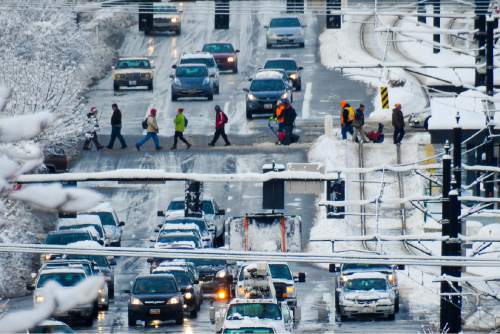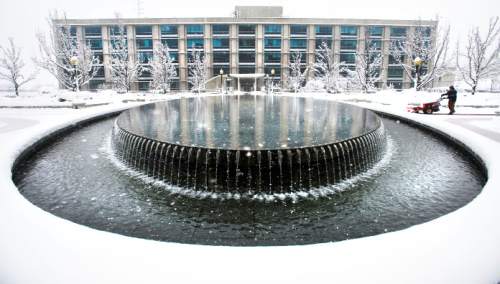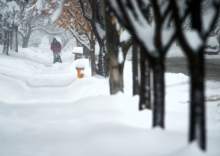This is an archived article that was published on sltrib.com in 2015, and information in the article may be outdated. It is provided only for personal research purposes and may not be reprinted.
This week's storm may have blocked roads with buckets of snow, but northern Utah is going to need much more of the same if it's going to break its four-year drought.
Snow that fell Monday and overnight into Tuesday saturated most of the state, but the biggest hits were concentrated in the south and west, said Randy Julander, Utah snow-survey supervisor for the U.S. Department of Agriculture.
The mountains above Zion National Park accumulated 32 inches of new snow, equivalent to 3.2 inches of water. Brian Head totaled 34 inches of new snow, and Settlement Canyon in Tooele County counted 25.
Monday's storm was big; the entire state did exceptionally well and snow levels in many areas exceeded expectations, Julander said. But while southern Utah is getting well-above-average snowpack this winter, snowpack in the northern part of the state is hovering around 70 percent of average.
Snowpack did jump almost 20 percent in northern Utah — a bigger improvement than forecasters had anticipated, Julander said. But this part of the state is going to need at least two more storms of Monday's scale if it's going to catch up to this year's normal level for snowfall.
After that, he said, Utah would need a couple more similar storms to exceed the normal level and end the water deficit that has extended Utah's drought.
Julander said he has a prescription for northern Utah: a storm every week for the rest of the winter.
Utah needs a whole new weather pattern to reverse the drought, Julander explained. Last year, he noted, Utah had a storm just like Monday's on Christmas.
After that, he said, "all we got was piddly squat here and there, little storms that never amounted to anything. That is what we'd hate to see, is a repeat of the same pattern we got into last year, and that's possible as well."
Brian McInerney, a hydrologist with the National Weather Service in Salt Lake City, said the dry weather pattern that caused Utah's drought in the first place seems to be breaking down. If the current pattern continues, McInerney said, it should bring more wintry weather to Utah and put the state on the path to restoring its water reserves.
"Hopefully this progressive pattern will put more hits on us like we've seen today in the future," he said.
Twitter: @EmaPen











